[/caption]
CAPE CANAVERAL Fla. – As Florida’s Space Coast braces for the end of the shuttle program this month, signs of life after shuttle are starting to emerge. Space Exploration Technologies (SpaceX) returned the Dragon Spacecraft that launched this past December to Cape Canaveral Air Force Station. The Dragon however, was not alone. Two more capsules, one a test article, the other a mock-up were on display at Kennedy Space Center’s press site, signaling the coming way of the future for human spaceflight.
The Dragon Spacecraft was on display outside of Cape Canaveral Air Force Station. Placed between SpaceX’s Launch Control Center (LCC) and the U.S. Air Force Space and Missile History Center, the Dragon’s scorched hull was displayed to remind Space Coast residents that the space program was not retiring along with the shuttles.
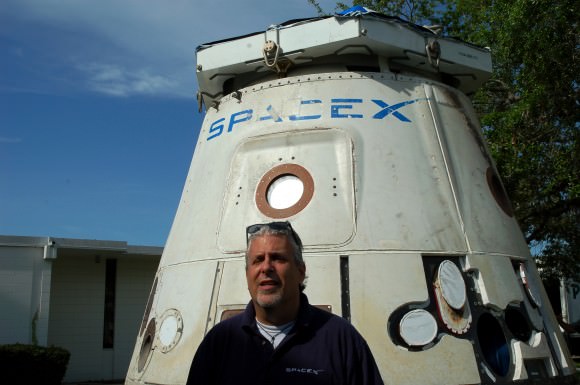
“A lot of people are sad that the shuttle program is ending, it has been such an integral part of the area for three decades that they have a right to feel this way,” said SpaceX’s Vice President of Communications, Bobby Block. “Just because the shuttles are retiring however, does not mean that the entire space program is ending – it’s not over – it is the ending of one program, but it also is the start of another.”
That sentiment was shared by Lockheed Martin who brought their Orion Multi-Purpose Crew Vehicle to sit near the iconic Countdown Clock, a mere 3.5 miles away from shuttle Atlantis out at Launch Complex 39A. At first glance the fact that the capsule was still chained to the back of a trailer appeared to suggest that its appearance was rushed but in fact it highlighted a campaign by Lockheed Martin to let the public view Orion.
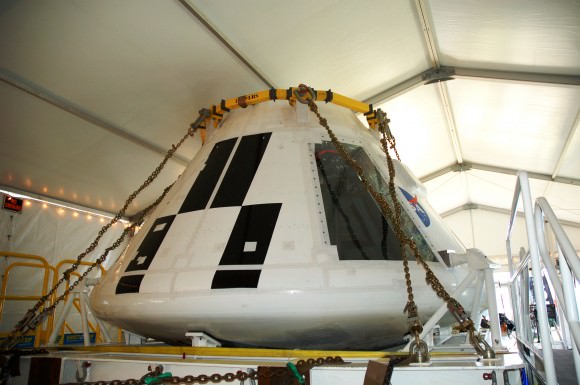
“We were taking the Orion to Kennedy Space Center so we took the opportunity to stop along the way,” said Lockheed Martin’s Communications Manager for the Orion Project Linda Singleton. “This way we could tell the public about the Orion Program, let them see the spacecraft first hand. We stopped at Tucson, Austin and Tallahassee and met with 20,000 people in person across the country and talked to them about Orion.”
Not to be outdone, the Boeing Company had a replica of its CST-100 Space Taxi – split down the middle allowing guests to get an up close and in-depth look at the capsule-concept that it is submitting, in collaboration with Bigelow Aerospace, as their entry for NASA’s Commercial Crew Development (CCDev) program. If chosen, it would be used to ferry astronauts to the International Space Station. Boeing also had a structural article on display nearby.
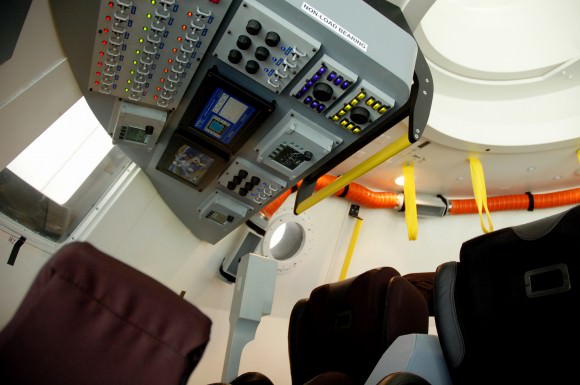
“The reason we selected a capsule is that it is a simple system, we’ve been flown since John Glenn did his first flight on Mercury,” said Boeing’s Vice-President and Program Manager of Commercial Crew Programs John Elbon. “The purpose of this transportation system is just to take passengers to the space station, so our design is focused on that mission.”
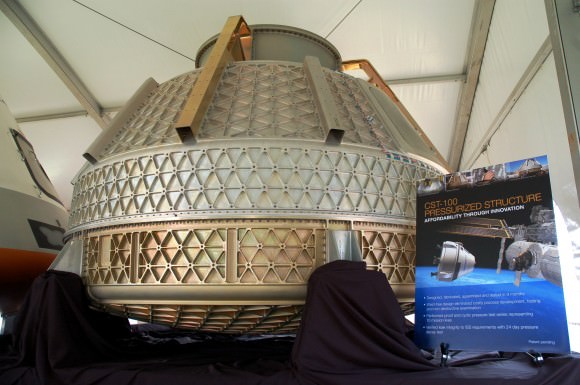
The numerous capsules on display as well as other “Space-Taxi” systems such as the one proposed by Sierra Nevada highlight efforts to shrink the human space flight gap that will start on July 21, when Atlantis conducts its final wheel stop. With the number of spacecraft that have flown, are being tested or just now emerging off the drawing boards it is possible that the U.S. might have a variety of craft for a wide range of missions. For now however, NASA will have to rely on Russia’s Soyuz Spacecraft.

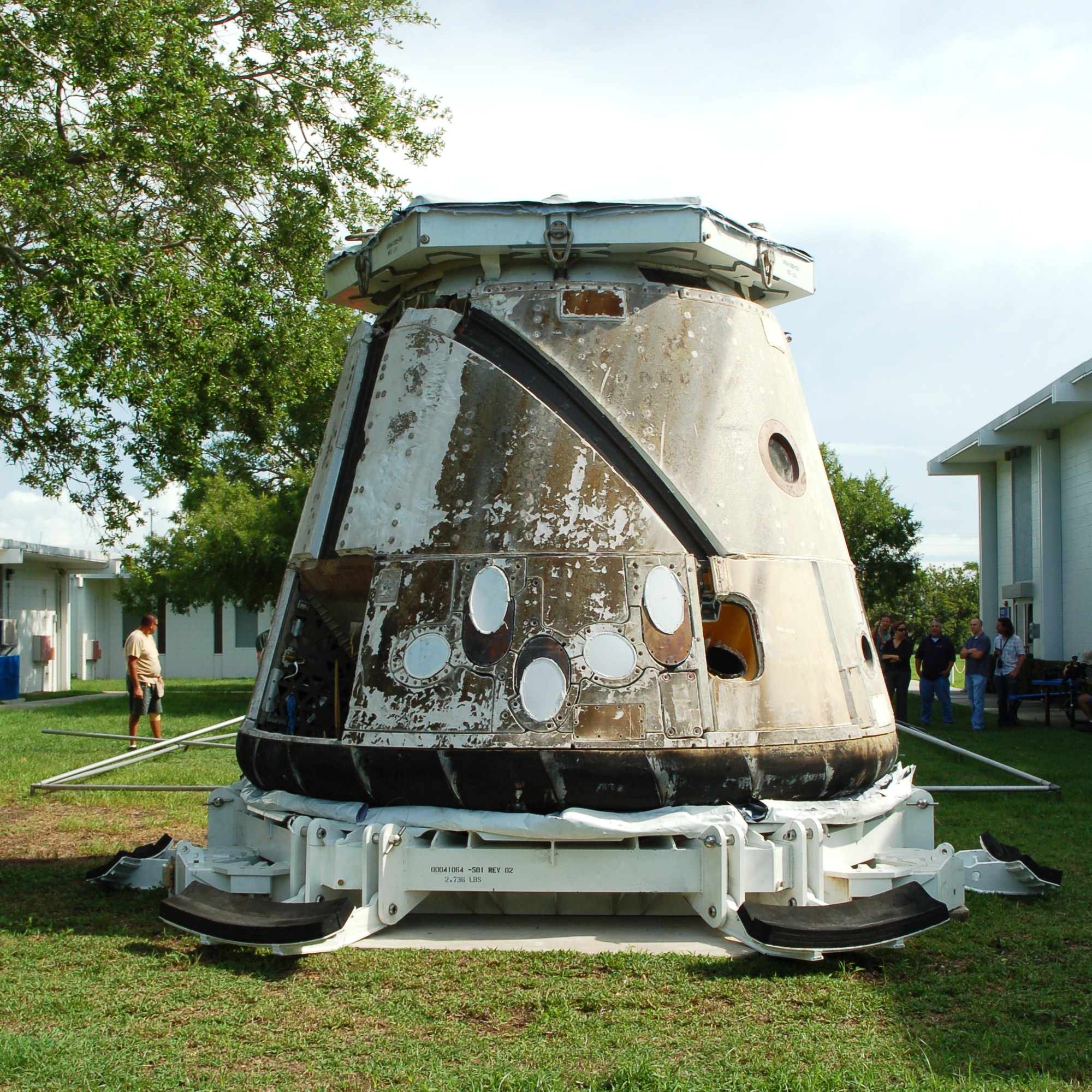
why does the dragon look like hell warmed over??? the mpcv doesn’t look big enough for 2 monkeys..now the cst-100 looks cool as hell inside and out! although i’m rooting for spacex.
Xzenos – the Dragon looks that way because it reentered Earth’s atmosphere. In fact, of the three the Dragon on display – is the only FLOWN article. The CST-100 – is just a mock up.
Actually, that particular Orion flew in an abort motor test. Not orbit, but it left the ground and came back on chutes…
Actually, that particular Orion flew in an abort motor test. Not orbit, but it left the ground and came back on chutes…
Soyuz FTW. Sound design beats compromise(d) designs any day. (O.o)
It is an interesting form factor in play here. The Dragon is both a cargo hauler and a manned craft, and while it too looses from the conical section, by the numbers it is much more volume efficient than the other two. In other words, its better approximation of a cylinder seems to translate well in volume.
I wonder if it translates well to useful inhabited space though.
“The reason we selected a capsule is that it is a simple system, we’ve been flown since John Glenn did his first flight on Mercury,”
A small point, but this always bothers me. Capsules have been flown since Alan Shepard’s first flight 9 month’s before Glenn. Primates were flown even earlier.